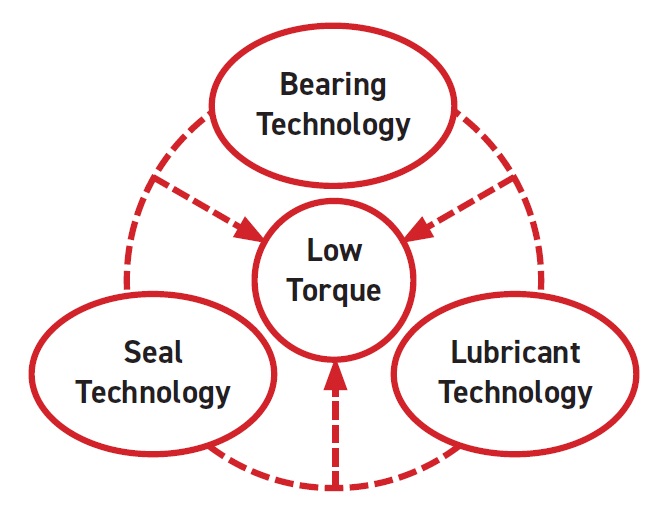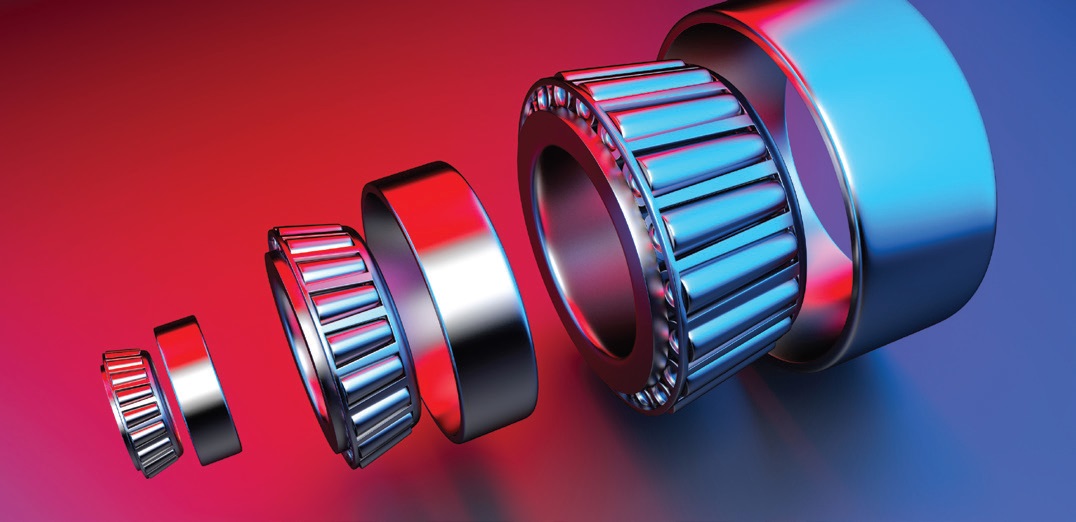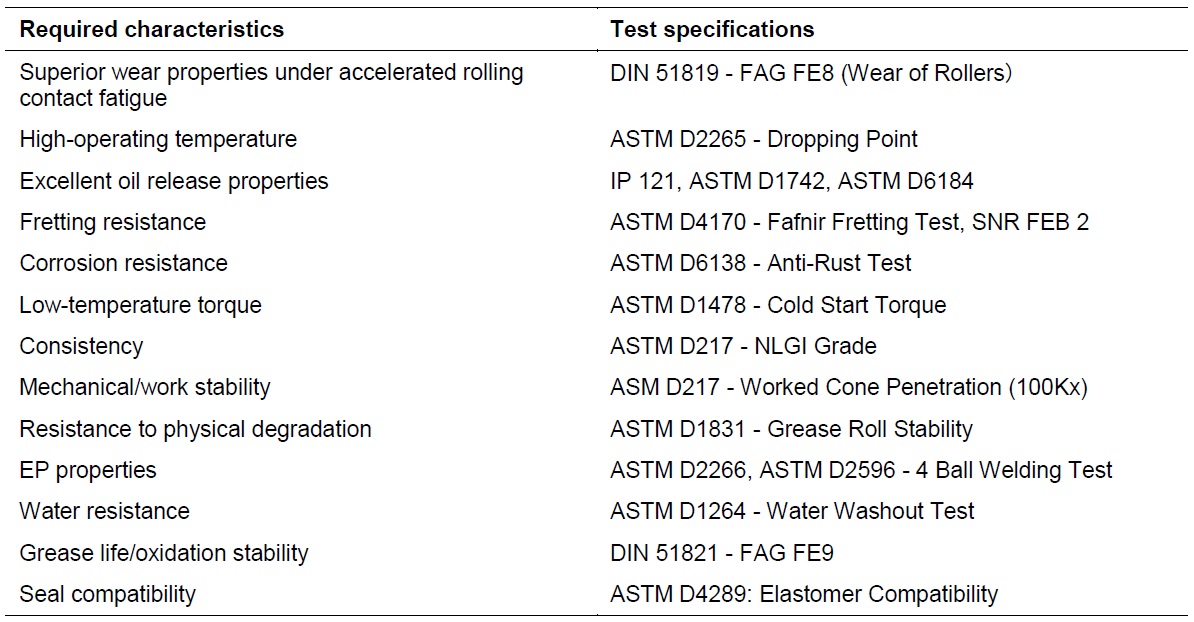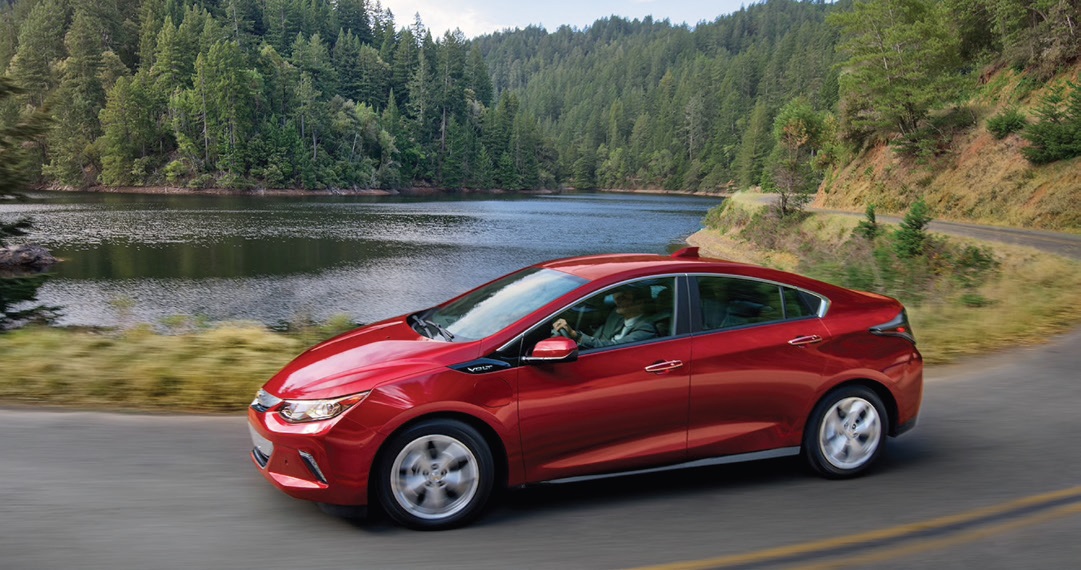Lithium greases represented 74.34% by volume of worldwide grease production in 2017, according to NLGI.
Capacity concerns have eased somewhat, but the diversion of lithium to energy storage could disrupt pricing.
A huge unknown impacting EV and lithium markets is whether car ownership remains a priority for future generations.
For additional perspectives on this complex issue, see The Tribology of Electric Vehicles in the January issue of TLT.
Electric vehicles (EVs) are no longer niche curiosities. Although projections vary greatly, EVs are rapidly gaining a mainstream market worldwide. As with any burgeoning technology, the surrounding landscape also is shifting rapidly. Lithium, the key element in EV batteries, is making a parallel transition from specialty product to mainstream chemical. But lithium also is the key component in the most popular lubricating greases. How will the grease market need to adapt to life in the shadow of EVs?
The first signs came in 2016 and 2017: Lithium-related industries experienced an upheaval when Tesla set aggressive goals for its electric vehicles and “battery farms.” In response, lithium prices spiked. “Countries like India were hardly able to get lithium at any price,” notes Dr. Anoop Kumar, senior staff scientist with Chevron in Richmond, Calif., and a TLT technical editor.
However, with the introduction of new processing methods and capacity, scarcity concerns have eased somewhat. Even so, diversion of lithium to energy storage still could disrupt pricing for lithium greases, depending on the trajectory of EV adoption. Further, the automotive industry is a significant consumer of lithium greases, so the lubrication needs of EVs could influence future lithium demand.
Lithium greases
Lithium-containing greases are soap-based formulations manufactured by saponification with lithium hydroxide (or, less frequently, lithium carbonate). Their dropping point temperature of 190-220 C (374-428 F) is higher than that of calcium greases; they adhere well to metal, are noncorrosive and resist moisture. These and other properties make them suitable for a wide range of applications, including heavy loads.
These attractive characteristics make lithium greases the most popular grease category on the market, representing 74% by volume of worldwide grease production in 2017, according to the National Lubricating Grease Institute (NLGI) (
1). This volume varies by region, from 67% in North America to 78% in China to about 85% in India (
2).
However, although lithium is key to grease markets, it is only a small aspect of the global lithium scene. According to figures from SQM, a $2 billion worldwide company and producer of lithium, the market share of worldwide lithium production in 2018 held by grease was 8%. In contrast, the market share held by energy storage was 59% (
3).
This imbalance in market position could put lithium greases at a disadvantage. “The versatility of lithium-based greases means they are unlikely to transition away from lithium inputs and, therefore, battery demand could have an impact on the production costs of grease producers,” says Andrew Miller, a senior analyst with price reporting agency Benchmark Mineral Intelligence in London.
EV growth projections
Projections of EV market adoption vary hugely, depending on the definition of “electric vehicle,” the region, the technology assumptions used and so on. To give a flavor of the numbers, EVAdoption projects that in the U.S. 22% of vehicles sold in 2025 will be EVs—an estimated 3.5 million vehicles (
4). Worldwide, Bloomberg New Energy Finance estimates that by 2040, 55% of all new car sales and 33% of the global fleet will be electric (
5).
According to the International Energy Agency’s Global Electric Vehicle Outlook 2018 (
6), the number of electric cars on the road would reach 125 million by 2030 under a scenario reflecting current and imminent policies. Under a more aspirational scenario reflecting greater global commitment to climate goals and other sustainability targets, the number of electric cars could be as high as 220 million in 2030. The same report puts global EV sales in 2017 at more than a million, with more than half of those in China; the U.S. and Europe accounted about equally for most of the rest of the sales. Already, the total number of electric cars has surpassed 3 million worldwide, or 50% more than in 2016 (
5).
Among the multitude of uncertainties in projecting demand for electric vehicles, there is a new unknown: the demand for personal vehicles of
any kind. As the sharing economy continues to develop, personal ownership of a vehicle could become a thing of the past. Writing about this trend, longtime New York Times technology reporter Kara Swisher notes how rapidly consumers abandoned apparent fixtures of everyday life: landline phones, prime-time television, postal mail (
7). Personal car ownership could go the same way.
Lithium supply and pricing
An initial concern about the effect of EVs on lithium supply was competition between two compounds: lithium carbonate and lithium hydroxide. Carbonate has historically been preferred for producing lithium-ion batteries; lithium hydroxide is more common for producing greases. In traditional lithium processing, the carbonate form is produced first, with hydroxide being produced at later (and more expensive) stages. The 2016-2017 supply crisis provoked concerns that production capacity would be diverted to carbonate at the expense of hydroxide for greases.
However, lithium battery technology is moving away from cobalt-rich cathodes and toward nickel-rich compositions, which yield greater vehicle range. For these cathode materials, lithium hydroxide is the preferred precursor. According to Miller, “The strong growth in battery demand is beginning to see expansions in lithium chemical processing facilities, particularly for lithium hydroxide, which is typically used in high-nickel cathode technologies. This year alone is expected to see the introduction of more than four major new lithium hydroxide conversion facilities.” Large current players, such as Albemarle, SQM and FMC, have been joined by various new producers, such as Pilbara Minerals in Australia (
8).
In this sense, EVs could be a boon to lithium greases. According to Miller, lithium greases account for 30 kilotonnes per year of the lithium hydroxide market; in 2018 the total lithium hydroxide market was 80 kilotonnes. Thus, Miller says, “Greater availability will be a benefit for grease consumers and also give them a more diversified selection of suppliers. In addition, the technical challenges in producing a battery-grade material will likely mean that a significant proportion of new supply will be technical grade, which could have a beneficial impact on pricing for grease producers.”
There are two other possible pressures favoring lower prices. First, new production capacity could result in a glut of lithium, at least in the short term, although opinions in the industry are mixed, according to a January report in Nikkei Asian News (
5). A second and much larger unknown is the eventual emergence of lithium recycling. In February the U.S. Department of Energy officially opened its first center for research on lithium recycling at Argonne National Laboratory (
9). As the vehicle sector becomes more dependent on EVs, concerns about national energy security will shift from petroleum to battery materials, motivating efforts to capture and retain valuable minerals such as lithium.
On the other hand, Chinese companies are moving aggressively to secure lithium supplies to support the country’s expected EV demand. In December 2018, China’s Tianqi Lithium Corp. purchased a 23.77% share in Chilean lithium miner SQM. Given Tianqi’s other holdings in the industry, the deal raised concerns that the company could be gaining excessive pricing power and possibly a monopoly position (
10). China is already the leading exporter of lithium hydroxide and a close second to Chile in exports of lithium carbonate, according to Miller.
“Overall, the lithium market is going through a major period of growth in its transition to a mainstream chemical,” Miller concludes. “While at times this will see the market move into oversupply, we believe for the next five to 10 years the overall market will remain relatively finely balanced due to the major increases in demand and challenges related to bringing new supply into the market.” Thus, during this transitional period, it is worthwhile to reconsider the role of lithium greases.
EV greases: What’s different?
In EVs the entire concept of a powertrain is being reimagined. Instead of an engine, which is lubricated with oil and transfers power to a transmission and from there to the wheels, a battery powers an electric motor (or motors) that drives the wheels. When designing EVs, engineers must select (or develop) gear oils, coolants and greases with new criteria in mind. In terms of lubrication, the most important differences from conventional vehicles fall into three areas: noise, efficiency and the presence of electrical current and electromagnetic fields from electric modules, sensors and circuits. Additional considerations include thermal transfer, seals and materials compatibility.
Noise. STLE-member Chad Chichester, an application engineer at Molykote Lubricants in Midland, Mich., puts noise at the top of his list of EV issues for lubrication engineers. He says, “Conventional vehicles, while becoming ever quieter, still have the omnipresent hum of the internal combustion engine to mask noise, vibration and harshness (NVH) and buzz, squeak and rattle (BSR). NVH/BSR issues are not only annoyances to the occupants, they also relate to perception of quality. But more importantly, noise can affect sensors that are increasingly used in vehicle safety and guidance.” Lubricant choices that reduce or eliminate noise will help make vehicles safe.
Energy efficiency. One of the most significant barriers to the broader adoption of EVs is so-called range anxiety—the fear of being stranded out of range of a recharging station. “Without recharging infrastructure, people may not yet be prepared to give up the 300- to 400-mile ranges they’re accustomed to in a conventional vehicle,” Chichester notes. Automotive engineers are constantly seeking ways to increase efficiency—and, consequently, range—by making vehicles lighter and by reducing torque in all components.
Electrified conditions. STLE-member Dr. Kuldeep K. Mistry, a product development specialist at The Timken Co. in North Canton, Ohio, points out that the development of electric vehicles will globally influence the selection and development of gear oils, coolants and greases, as they will be in contact with electric modules, sensors and circuits and will be affected by electrical current and electromagnetic fields. Chichester notes that even in conventional vehicles, the number of electrical connections is expected to quadruple during the next few years. In this context, one of the key life-limiting considerations will be corrosion.
EV greases: What’s the same?
Will EVs have different lubrication needs beyond the powertrain? STLE-member John Sander, vice president of research and development at Lubrication Engineers, Inc. in Wichita, Kan., doesn’t think so.
“Besides the battery/electric motor drive train, I do not feel that the requirements will differ,” he says. “Most other features and user expectations for convenience and reliability from all other moving parts will remain the same. Many of the greased applications that are currently on vehicles, such as door locks, hinges, wheel bearings and so on, will still be the same and can continue to use the same grease as has been proven successful to now. I also expect the OEMs to continue to offer the same vehicle warranties, meaning they would require the same or better performance from greases.”
In contrast, Mistry believes there are new needs and opportunities in conventional components of EVs, particularly bearings: “The wheel bearings of electric vehicles will have to operate under extreme conditions; the grease needs to lubricate wheel bearings over a wide temperature range while maintaining a focus on noise and lower torque (higher efficiency).”
Sander does see a change in conventional components that is already happening without fanfare: the migration to sealed-for-life bearings. “This trend is already in full swing,” Sander says. “When a bearing is sealed, it means the entire component, including the grease contained within, is replaced rather than grease being added or maintained separately by the end-user or maintenance location.” In EVs this trend could apply to electric motors as well, according to Kumar.
The e-mobility era
The global arrival of EVs and all they bring with them—that is, the shift to e-mobility—is prompting reconsideration of the role of lithium in grease, both within and beyond the automotive industry. Pressures include both the potential instability in the lithium market and the new demands of EV designs.
A range of alternatives to lithium thickeners exists, of which the most promising seem to be aluminum complex, urea greases and calcium sulfonate, according to Sander. Not all are equivalent in performance or availability. He explains, “Aluminum complex and urea-type greases in many applications perform admirably compared to lithium greases. Yet both can tend to be more challenging to produce than lithium greases, either due to processing hazards (urea-type greases) or ensuring proper formulary and process balance (aluminum complex). Both of these grease types also can have compatibility issues with other greases (sometimes even with greases of the same thickener type).
“Calcium sulfonate greases in general appear to be the best alternative, as they use relatively abundant raw materials, the thickener itself has natural extreme pressure and corrosion-inhibition properties, and they have good compatibility with most other grease types. Still, they also have some challenges versus lithium greases. For example, the amount of thickener is higher, so sometimes pumpability can be challenging. Finally, depending upon how a calcium sulfonate is produced, they can be a little more difficult to produce than lithium greases (whether produced from base ingredients or using precursor formulas being provided by certain suppliers today).”
Kumar says that in Asia, formulators are considering mixed-base greases as insurance against price instability. “In Asia, which is still a developing market, 85%-90% of greases are lithium based. Previously, these markets used calcium- or sodium-based greases, especially in bearing applications and automobiles and trucks. Then they went to better products—lithium greases. But when lithium prices went up, people started thinking about mixing lithium and calcium because of their previous familiarity with calcium greases. If they cannot completely replace lithium grease, they’ll go with mixing the grease and trying to reduce the consumption of lithium.”
Chichester concurs that there are many alternatives to lithium thickening systems: “Other metallic-based greases like calcium and aluminum may play a part, but likely it will be more specialized greases using sulfonate and urea-thickened greases and perhaps thickening systems that are not yet commercialized. Adaptations of these vary, as these greases don’t necessarily follow familiar saponification processes. In some cases, the raw materials and reactions must be handled with much more stringent safety precautions.”
Kumar also notes that potential volatility in lithium pricing may affect the viability of alternative greases in different ways. “It’s not a one-to-one replacement on grease pricing. There are also some other parameters, such as additives, that play an important role in pricing. Additives are in general more expensive than lithium or even base oils. So pricing is a complex scenario.”
Automotive concerns
Energy efficiency. Mistry says that reducing the torque properties of greases will be key to success in an EV-dominated auto industry: “This can be achieved by selection of better base oils, better thickener system and better additives that enable long life, high efficiency and low noise as well as provide compatibility with various polymers, plastics and copper wires. Moreover, for newer motor designs, different lubrication and cooling concepts are being investigated.”
Mistry highlights in particular the tradeoffs in reducing torque by using low-viscosity lubricants. “Low-viscosity lubricants and greases will be used in EVs for improvements in fuel economy and [will be] tailored toward the special driving requirements or regimes of EVs. However, low-viscosity fluids reduce the film thickness in the application. This reduced film thickness increases the operating temperature and reduces the calculated fatigue life of the bearings.
“Thus, bearing knowledge and fundamentals will be even more critical as OEMs move to low-viscosity lubricants and premium bearing suppliers will leverage materials, bearing geometries and surface topography to combat the impact of low-viscosity lubricants (
see Figure 1).
 Figure 1. Meeting vehicle manufacturers’ requirements for low torque in electric vehicles will require collaborative solutions across the industry.
Figure 1. Meeting vehicle manufacturers’ requirements for low torque in electric vehicles will require collaborative solutions across the industry.
Another element in the solution may be surface coatings, which at present are not used in automotive applications, according to Mistry. However, he points out that “to offset thin-film bearing conditions that occur as a result of using low-viscosity oils, a surface coating may be used to enhance the performance (e.g., fatigue life, electrical resistance, scuffing resistance).”
Regarding efforts to reduce vehicle weight, Chichester reminds lubrication engineers to bear in mind that lightweight materials used in vehicles, such as plastics and composites, can be affected by exposure to lubricants, including greases. “The lightweight material must still deliver mechanical and electrical performance for the life of the vehicle. Greases must be formulated not only to control friction and wear, but they also
must not change mechanical properties such as tensile strength, stress crack resistance and hardness.”
Noise. Noise concerns require new ideas as well. Chichester says, “We need greases to mitigate NVH/BSR issues; these greases are different than the plethora of powertrain, chassis and body greases on the market today.” However, test methods and specifications for noise performance in EVs have not been standardized.
Electric motors and electrified conditions. The operating conditions of high-performance electric motors require a different approach to selecting a grease, according to Mistry. “The main purposes of an electric motor bearing grease are to minimize the friction and wear, seal to prevent entry of contaminants and protect bearings against corrosion. The motors in electric cars also emit a lot of heat, which will need to be led away from the electric module. Here, effective cooling concepts will be increasingly important. It is also likely that the electric motors will be driven at higher and higher speeds to increase efficiency.
“Thus, the selection of the oil viscosity should be appropriate for the load, speed and operating temperature of the application. Moreover, it is desirable to have grease with a high ASTM D3336 oxidation life or DIN 51821 high temperature bearing life testing. The results of the high-temperature grease life test validate the oxidation resistance when operating under extreme conditions. Also, grease with a high dropping point is desirable, given the high temperatures reached during electric motor bearing operations.”
Mistry notes two other considerations for grease lifetime: additives and shear stability. “The presence of antiwear and/or extreme pressure additives can shorten the life of the grease; they are not recommended unless there is a thrust load on the bearings. Shear stability is a measure of the change in the consistency of the grease after it has been worked for 100,000 strokes. If the grease softens too much, it could leak out of the bearing with age.”
According to Sander, urea greases are favored in electric motor applications and could see an increase in market share.
Chichester notes the need to select greases for corrosion protection: “To mitigate corrosion, greases are applied to contacts to reduce fretting and limit exposure to corrosive environments created by moisture, salts and acids. These greases need to maintain contact electrical properties, such as volume resistivity, dissipation factor and dielectric strength. Any electrical losses across so many connections can impact energy usage, range and time to recharge.”
 © Can Stock Photo / Dezay
Conventional components.
© Can Stock Photo / Dezay
Conventional components. With the removal of the traditional internal combustion powertrain, the next target for EV efficiency is wheel bearings. Mistry explains some of the considerations of targeting torque in wheel bearings: “The bearing temperatures may have frequent elevated temperature excursions. During its service life, the grease must resist oxidation, evaporation and consistency degradation while protecting the bearings from corrosion and wear. NLGI No. 2 consistency greases are commonly recommended.” Table 1 lists characteristics that must be considered in selecting wheel bearing greases for EVs, with their associated test specifications.
Table 1. Selected Test Specifications Relevant to Wheel Bearing Lubrication in Electric Vehicles
 Courtesy of Kuldeep Mistry and The Timken Co.
Courtesy of Kuldeep Mistry and The Timken Co.
“Lithium-complex and urea thickeners are commonly being seen in wheel bearing applications as they can meet and exceed the requirements of current wheel bearing lubrication,” Mistry says. “However, with requirements of higher efficiency and lower torque, the additives, polymers, base oils and type of thickeners play a very important role. Moreover, more shear-stable di-urea thickeners will be a better option in comparison to lithium complex thickeners.”
Other conventional components also may move away from lithium greases. According to Kumar, “Traditionally, constant-velocity joints in automotive applications used lithium greases, but now people are moving toward long-life polyurea greases as they have the potential to permit sealed-for-life designs.”
 Photo courtesy of chevrolet.com
Photo courtesy of chevrolet.com
Looking ahead
The vast and multiple uncertainties of the e-mobility landscape extend into the world of lithium greases. As EVs and lithium minerals shift from niche to mainstream, existing specialty greases may follow the same path, either because they have optimum qualities for EVs or because they become price-competitive in a tight market for lithium.
While the uncertainty is challenging, it also opens doors for innovation. Meeting the new performance expectations of EVs will require new kinds of collaboration among industry segments, for example in developing solutions and specifications for reduced torque and noise.
Chichester is optimistic: “Certainly the increased demand for lithium-based batteries will impact both real and perceived concerns about lithium availability. This is energizing the interest in many facets of the future of grease as a whole. For lithium greases, increasing interest in optimizing lithium grease production and performance bodes well for the future of quality lithium greases. In addition, expanding the knowledge and performance of other non-lithium greases is exciting, whether through existing thickening systems, such as calcium sulfonate, or new thickening systems that have yet to be commercialized.”
REFERENCES
1.
2017 NLGI Grease Production Survey, by the National Lubrication and Grease Institute. Available
here, p. 1.
2.
2017 NLGI Grease Production Survey, p. 3, 12 and 10.
3.
Jimenez, D. (2018), “Lithium market outlook,” presented at Il Foro del Litio, Santiago, Chili, August 8. Available
here, p. 7.
4.
From “EV sales forecasts,“ by EVAdoption, accessed March 20, 2019. Available
here.
5.
From
Electric Vehicle Outlook 2018, by Bloomberg New Energy Finance, report overview, accessed March 20, 2019. Available
here.
6.
From
Global EV Outlook 2018, by International Energy Agency, report home page. Available
here.
7.
Swisher, K. (2019), “Owning a car will soon be as quaint as owning a horse,” Opinion,
New York Times, March 22. Available
here.
8.
Hiscok, G. (2019), “Australia lithium output set to soar as electric cars gather steam: Glut concerns loom as Chinese money drives a flurry of mine expansions,”
Nikkei Asian Review, January 22. Available
here.
9.
Kurz, T. (2019) “DOE launches its first lithium-ion battery recycling R&D center: ReCell,” Argonne National Laboratory. Available
here.
10.
De la Jara, A. (2018) “Tianqi buys stake in lithium miner SQM from Nutrien for $4.1 billion,” Reuters, December 3. Available
here.
Jane Marie Andrew is a free-lance science writer and editor based in the Chicago area. You can reach her at jane@janemarieandrew.com.